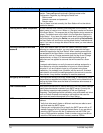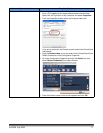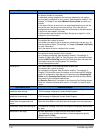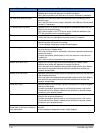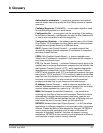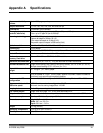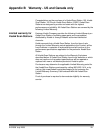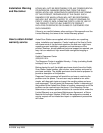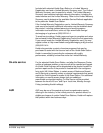
A-61588 July 2008 8-1
8 Glossary
Authentication credentials — a username, password and optional
network domain name that grants the Scan Station access to network
resources.
Challenge Response (CRAM-MD5) — an encryption algorithm used
for authenticating access to an email server.
Configuration file — an encrypted .xml file containing all the settings
for the device. Basically, a configuration file tells the Scan Station who it
is, how to scan and where to send the digital files.
Configuration Organizer — the software used by users of the Kodak
Scan Station 100 to configure the Scan Station and to create personal
settings that are typically saved to a USB flash drive.
DHCP (Domain Host Control Protocol) — a network protocol that
dynamically assigns network addresses (IP addresses) to computers
and other network devices.
FQDN (Fully Qualified Domain Name) — a human-readable name
linked to the IP address of a computer. It includes both the computer’s
host name and domain name.
FTP (File Transfer Protocol) — a standard Internet protocol which is the
simplest way to exchange files between computers on the Internet. Like
the Hypertext Transfer Protocol (HTTP), which transfers displayable
Web pages and related files, and the Simple Mail Transfer Protocol
(SMTP), which transfers email, FTP is an application protocol that uses
the Internet's TCP/IP protocols. FTP is commonly used to transfer Web
page files from their creator to the computer that acts as their server for
everyone on the Internet. It is also commonly used to download
programs and other files to your computer from other servers.
IP address (Internet Protocol) — used to reference computers on a
network. Addresses presented in a universal format of four, three-digit
numeric values separated by a period (e.g., 192.168.1.1).
MIME (Multipurpose Internet Mail Extensions) — the standard for
attaching non-text files to Internet mail messages. These files include
spreadsheets, formatted word-processor documents, graphics and
sound files. The MIME standard defines the type of file being sent and
what should be done to convert it back into its original form.
NETBIOS (Network Basic Input Output System) — an API that allows
applications on different computers to communicate within a local area
network. Created by IBM and later adopted by Microsoft, NETBIOS is
used in most physical topologies and is a staple of Windows NT
networks. A broadcast “protocol” that does not support a routing
mechanism, NETBIOS is often carried over other protocols to allow its
continued use in larger modern (routed) networks.



